Knee pain while cycling is not an uncommon problem
In our Bikefitting services we are confronted with the problem of “knee pain while cycling” on a daily basis. Many people complain of knee pain when cycling and there can be a variety of reasons for this. With this article we want to help you to understand the problem more precisely, to narrow down possible causes and to take the first steps to get the problem under control.
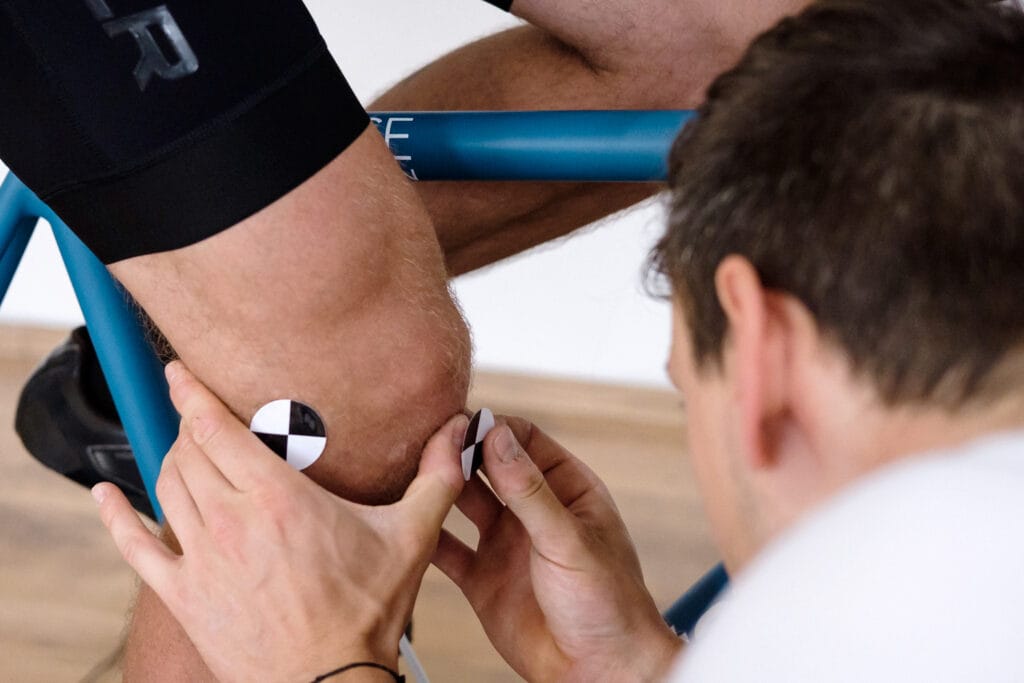
What are potential differentiations of knee pain while cycling?
One thing up front … it’s very unlikely that there is a quick and easy fix for your cycling knee pain. Pain is generally very complex and as it came, it will probably go again. The pain is usually a combination of:
- Bike-related problem (the knee is “forced” into an unfavorable movement or position due to an incorrect setting of one or more contact points on the bike),
- direct muscular problem (a specific muscle involved in knee movement is acutely or chronically “dysfunctional”) or
- indirect muscular, peripheral problem (the affected muscle compensates for a problem, which is actually in another place)
In most cases, knee pain (like almost any other pain) is a combination of several, if not all three factors. With a completely mobile, flexible and strengthened body, knee problems occur only very rarely when cycling, but in these cases can be solely attributed to an incorrectly set bike position. The incorrect settings in these cases are often so extreme that they can be identified and remedied with a detailed inspection, even by an amateur.
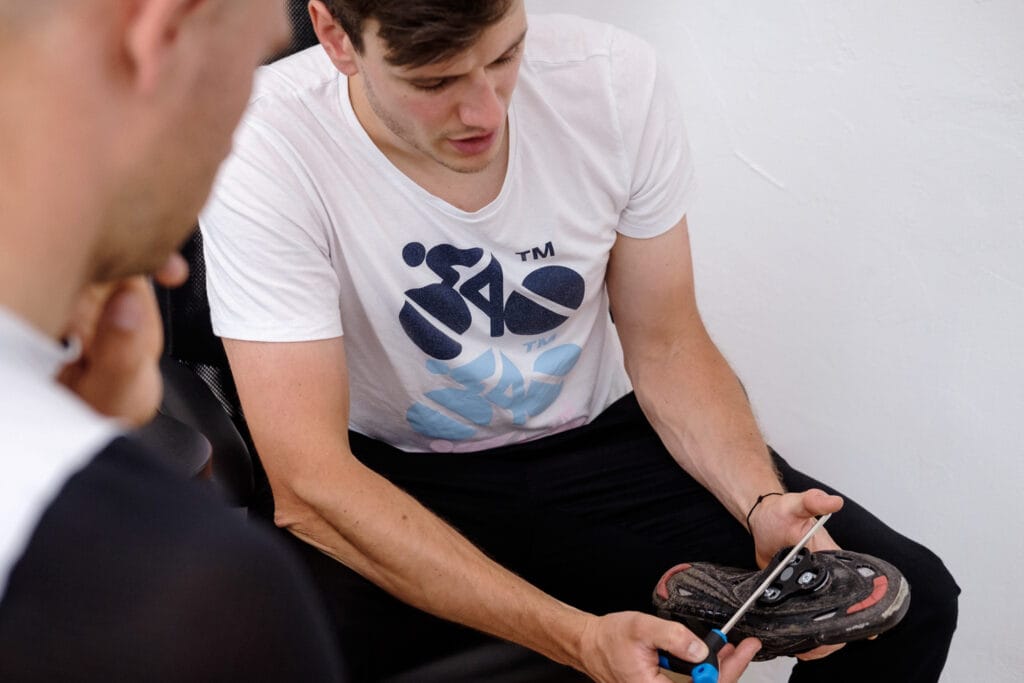
Incorrect bike settings that can lead to knee pain while cycling
Cleats
The first cause of knee pain when cycling is often incorrectly adjusted cleats. A cleat placed too far forward brings the knee higher at the upper turning point and thus leads to an acute knee angle when entering the pressure phase. This is a troublesome position, as it can lead to unfavorable force relationships around the kneecap (so-called retro-patellar pressure). The same also applies to a crank that is too long! If in doubt, take the cleat backwards (and possibly shorten the crank length)! Likewise, a cleat with an incorrectly set rotation lead to rotational movements and thus shear forces on the knee axis. Here you should make sure that you (generally speaking) adjust the cleat so that the heel of the foot rotates slightly inwards.
Saddle height
One of the most common causes of knee pain when cycling is poorly adjusted seat height. A saddle that is set too low leads to an acute knee angle when entering the pressure phase and thus to unfavorable force relationships around the kneecap. A saddle that is set too high, on the other hand, often causes the knee to overstretch and tends to irritate the back muscles and especially the iliotibial tract . As a (very striking) help, pain in the front of the knee often indicates that the seat height is too low, while pain on the back and outside of the knee indicates a sitting position that is too high. We have tried to describe how you can adjust your seat height correctly .
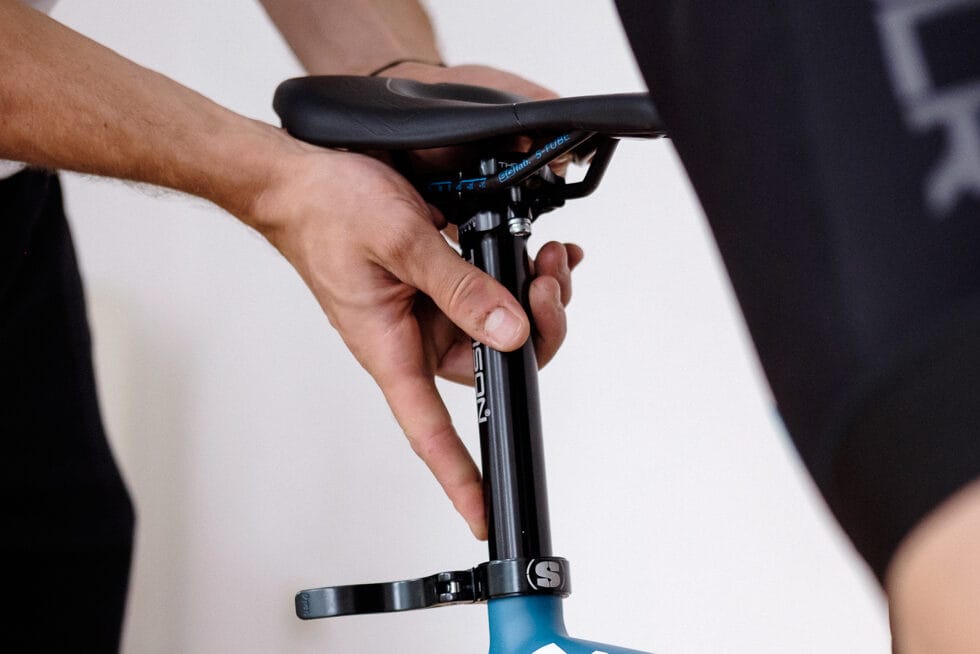
Saddle tilt & wrong saddle model
Yes, the choice of the right saddle, but especially its position (in front-back direction) and inclination strongly influence the load on the knee. An extremely forward set, and forward tilted saddle shift the body’s center of gravity forward and create a kind of “torque” on the bike. The body “tilts” forward. This, coupled with somewhat weak body posture muscles often leads to compensation in the pedal stoke. At the beginning of the pressure phase, the rider “pushes” against the pedal to keep themselves stable on the saddle. Here again, a lot of force is generated at an acute knee angle, which can lead to overload. On the other hand, a saddle that is extremely far back or tilted backwards often leads to a very backward center of gravity and an upright pelvic position, which makes it difficult to generate effective power from the extensor muscles. Tip: It is best to start here first from a visually neutral position and begin lower rather than higher. The foot should also not become too pointed through the lower point, and the knee should remain slightly bent.
Cockpit position
The position of the cockpit also influences the load on the knee. Similar to a poorly adjusted saddle, the cockpit also influences the position of the body’s center of gravity on the bike. A cockpit that is too far away “pulls” the body forward on the bike, so to speak. A little tip: If you can’t move your hands around the handlebars while riding without a lot of help, this indicates that your body’s center of gravity is forward. This must be stabilized somehow and if the body posture muscles are not developed accordingly, this imbalance is compensated for by “pushing” against the pedal when entering the pressure phase.
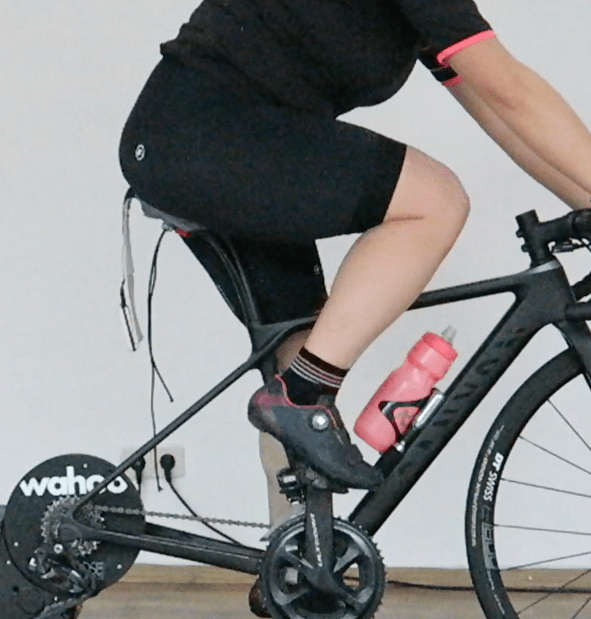
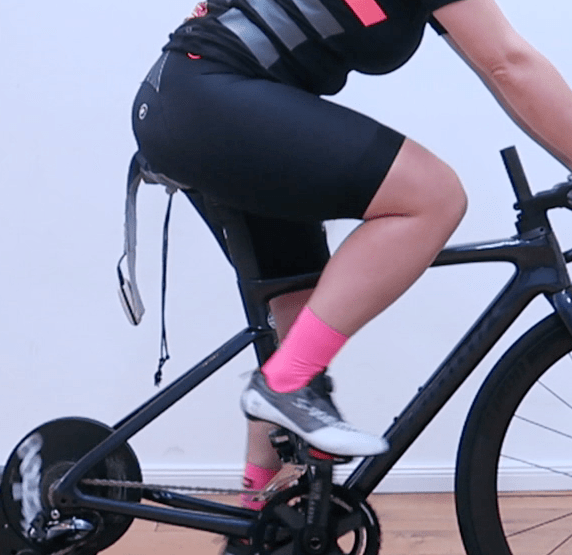
What should I do if the bike is set ok and I still have knee pain while cycling?
Much more often, however, knee pain appears while cycling WITHOUT obvious error in the bike setup. Why?
Pain usually has something to do with incorrect or inadequate muscle use. Many muscles do not really do “what they were prepared or made for”. Often simply because other muscles do not do what they are supposed to do and therefore, others must “take over” their tasks accordingly. So the real cause (and thus the fix) of knee pain while cycling does not necessarily have to be around the knee.
One of the most common causes of knee pain while cycling are dysfunctions around the hip muscles!
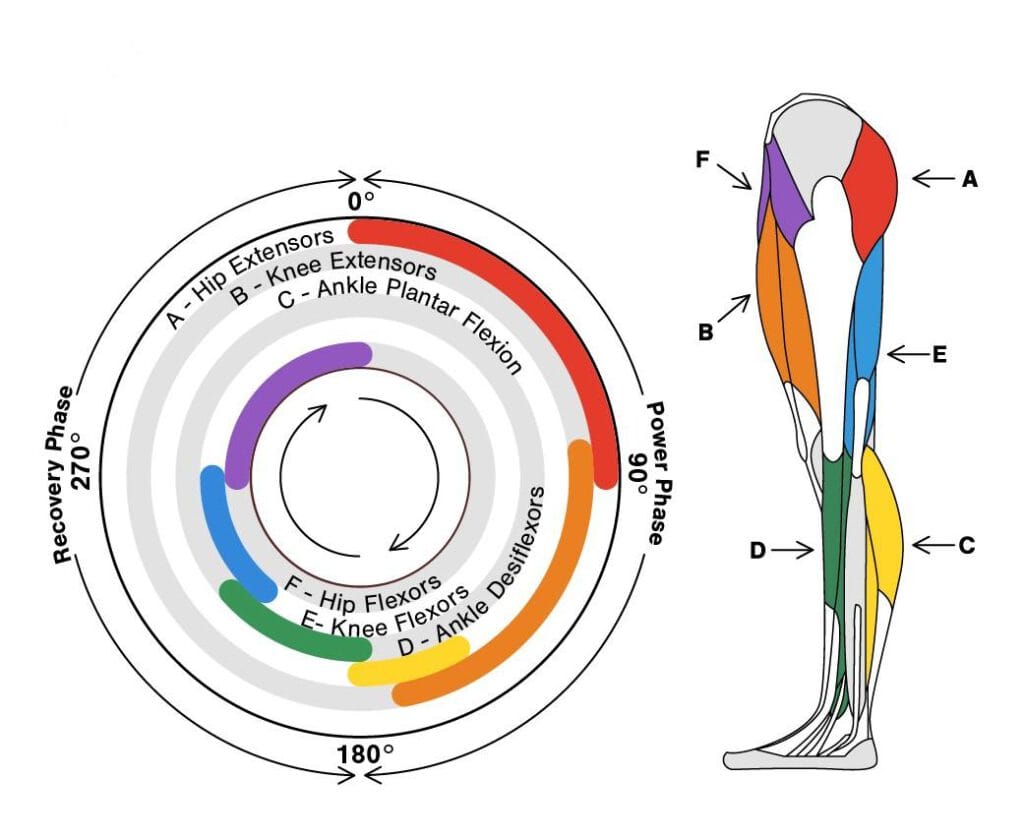
Hip functionality and its effects on movement (and thus also knee strain) when cycling
Almost all muscles that are involved in cycling are attached to the pelvis or are indirectly linked to the pelvis. This applies to all muscles that directly apply force to the pedal as well as muscles that fix and hold the body while force is being transmitted.
One of the biggest and most common problems related to knee pain when cycling is imbalances and weaknesses in the muscles surrounding the hips. These muscles surrounding the hips are often developed by a lack of movement and one-sided posture (especially too much sitting) of the pelvis.
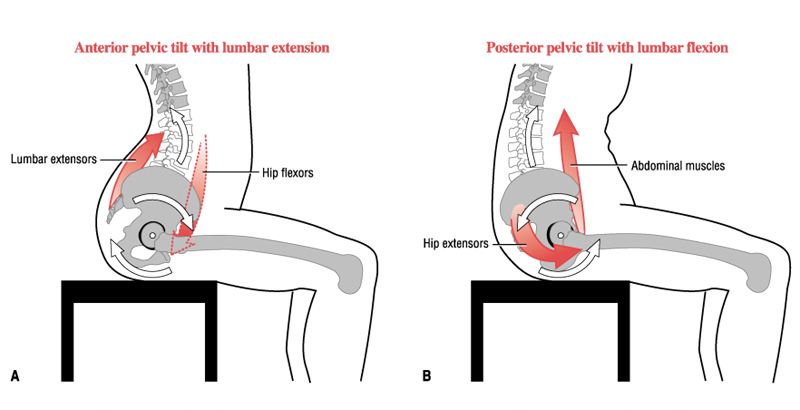
“Sitting is the new smoking”
James Levine
Excessive sitting puts our largest joint – the hip – in a very atypical and unfavorable position. Hip flexor muscles, which are essential for pedaling motion, are permanently shortened. The gluteal muscles, which can powerfully extend backwards and downwards during the pedaling movement, are almost permanently “switched off”. This results in a manifest imbalance, from which adjacent muscles are often affected.
If we now get on the bike with these “dysfunctional” hip muscles, compensatory measures are virtually pre-programmed. For example, at the upper turning point, the knee readily swerves outward to relieve the hip flexor. Or in the compression phase, hip stabilizers cannot adequately fixate and other muscles take over this work… one could list numerous phenomena here.
In almost all bike fitting appointments we can find symptomatic dysfunctions around the hip:
- Hypertonic hip flexors and tight lower back extensors
- Atrophied muscles of the posterior chain (gluten, hamstrings, …)
- Poorly developed hip stabilizing muscles
- Poorly developed core muscles
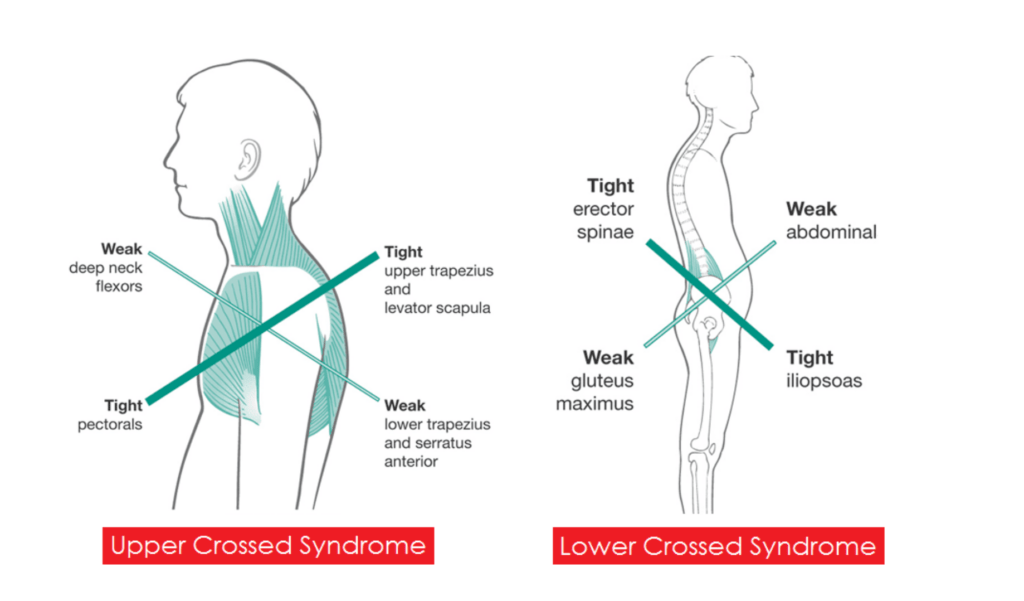
Measures to restore hip functionality and thus reduce knee pain when cycling
By mobilizing the hips and improving the muscular conditions around the hips, most knee pain while cycling can be significantly alleviated, if not eliminated, within a few weeks or months.
The best actions include:
- Releasing the iliotibial tract (e.g. using fascia rollers)
- Stretching the quadriceps
- Dynamic length of the hip flexors (keyword “hip opener”)
- Strengthening the gluteal and posterior muscle groups
- Strengthening the deep abdominal muscles
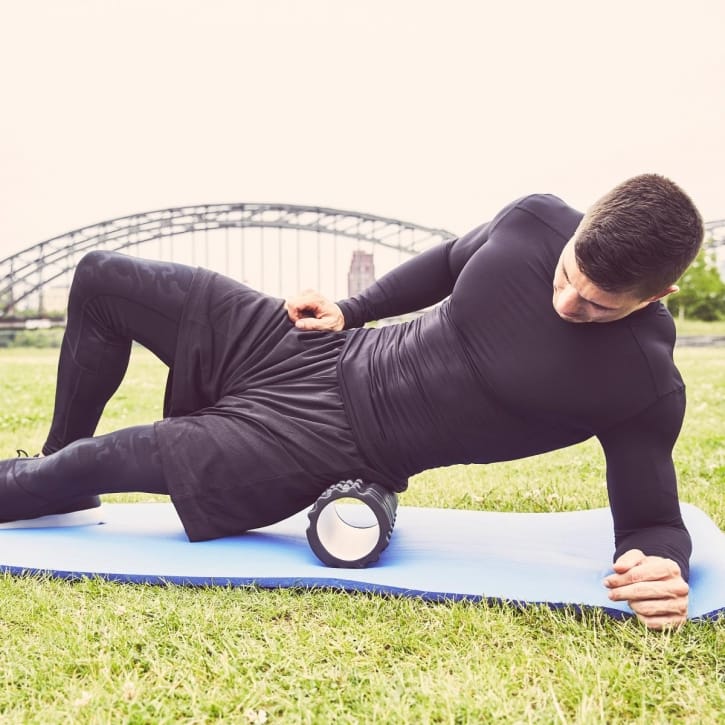
It doesn’t take much. Some aids (they are all in one place at Gorilla Sports, for example) and a small routine of exercises. The regularity of the exercises is much more important than the “difficulty” of the individual session. It’s not about the big workout, but 10 minutes a day while the coffee runs through! The static posture of the muscles surrounding the hips must be broken regularly!
We have put together a small series of what we believe to be the most profitable exercises on our YouTube channel. For a continuing, more in-depth program that helps you work on your hip functionality, check out our cooperation partners from THE DYNAMIC CYCLISTS. Here you get with our 15% discount code “DIAGNOSEBERLIN” for the equivalent of just under 5€ per month a program, perfectly thought out by physiotherapists and even specifically designed to target knee pain!!! It’s worth it!
Translated with www.DeepL.com/Translator (free version)
